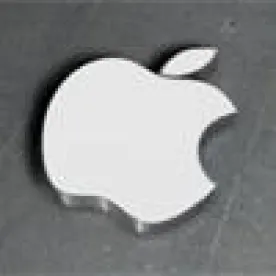Takeaway: The Board will consider on a case-by-case basis whether the claimed subject matter as a whole recites a technological feature that is novel and unobvious over the prior art and solves a technical problem using a technical solution in determining whether a patent is for a technological invention under 37 C.F.R. § 42.301(b).
In its Decision, the Board denied the Petition as to all challenged claims of the ‘556 patent. As found by the Board, Petitioner had not demonstrated that the ‘556 patent was eligible for review as a covered business method patent.
Petitioner had requested covered business method patent review of claims 1, 8, 9, 11, 12, 19, 20, and 22 of the ‘556 patent. Such claims each relate to either a method or computer system for providing a digital asset for distribution within a network (such as the Internet). A key purpose of the subject matter disclosed in the ‘556 patent is “to allow individual customers to trade digital assets with each other while compensating rights holders for their work, and its system allows each digital asset to be identified and tracked at the time the asset is transferred.”
Petitioner asserted several grounds upon which the challenges to the claims of the ‘556 patent were based. These include: lack of written description for claims 1, 9, 11, 12, 20, and 22 under 35 U.S.C. § 112, first paragraph; indefiniteness of claims 8 and 19 under 35 U.S.C. § 112, second paragraph; and patent-ineligibility/utility of claims 1, 8, 9, 11, 12, 19, 20, and 22 under 35 U.S.C. § 101.
Noting that each of independent claims 1 and 12 implicates the debiting of an account referring to a financial transaction, the Board concluded that ‘556 patent “meets the ‘financial product or service’ requirement under § 18(d)(1) of the AIA.” As for whether Petitioner had demonstrated that the ‘556 Patent is not a patent for a technological invention, the Board focused on Petitioner’s assertions with regard to claim 1.
In this connection, Petitioner had argued that each seven limitations located between the preamble and the so-called “debiting an account of the user” language included the generic phrase “by at least one of the one or more computing devices.” These limitations are referenced in the Board’s Decision as “the seven limitations.” Although Petitioner has provided analysis of three of these seven limitations, the Board found that Petitioner had not “[addressed] the details of the remaining four of the seven limitations[.]”
The Board ultimately concluded that “contrary to Petitioner’s contentions . . . claim 1 recites specific steps for a particular way of tracking digital assets in a network[,]” and that “claim 1 recites specific steps that are a combination of hardware and software.” According to the Board, “Petitioner’s analysis regarding whether the claimed subject matter of the ‘556 Patent, as a whole, recites a technological feature that is novel and unobvious over the prior art is conclusory and fails to address the above-noted technical features.” The Board went on to say that “Petitioner narrowly focuses on the ‘one or more computing devices’ recited in claim 1 and does not address adequately the specific software steps performed by the claimed computing device(s).” Further, according to the Board, “Petitioner’s assertion that two of seven limitations recited in claim 1 are mentioned in the background section . . . also is inadequate because it doesn’t account for the claim as a whole.” The Board also noted that “Petitioner does not provide expert testimony in support of its contentions.”
The Board went on to indicate that “Petitioner fails to address persuasively whether the ’556 Patent solves a technical problem using a technical solution.” Thus, the Board was “not persuaded that the technical features in the claim reflect merely the application of claim drafting techniques” which led the Board to conclude that “Petitioner has not shown the limitations in the challenged claims of the ‘556 Patent are simply generic functions that are capable of being performed by a general purpose computer.”
As summarized by the Board, “Petitioner has not demonstrated sufficiently that the claimed subject matter of the ‘556 Patent is not a technological invention.” Thus, “[for] the foregoing reasons, [the Board determined] that Petitioner has not demonstrated that the ’556 Patent is eligible for review as a covered business method patent under AIA § 18(d)(1).” Accordingly, no covered business method patent review of the ‘556 patent was instituted.
Apple, Inc. v. ContentGuard Holdings, Inc., CBM2015-00046
Paper 12: Decision Denying Institution of Covered Business Method Patent Review
Dated: June 3, 2015
Patent: 8,583,556 B2
Before: Jameson Lee, Jennifer S. Bisk, and Barbara A. Parvis
Written by: Parvis
Related Matters: ContentGuard Holdings, Inc. v. Amazon.com, Inc., No. 2:13-cv-1112 (E.D. Tex.); IPR2015-00399; IPR2015-00400; CBM2015-00041 (terminated); CBM2015-00042 (terminated); and CBM2015-00045



 />i
/>i

